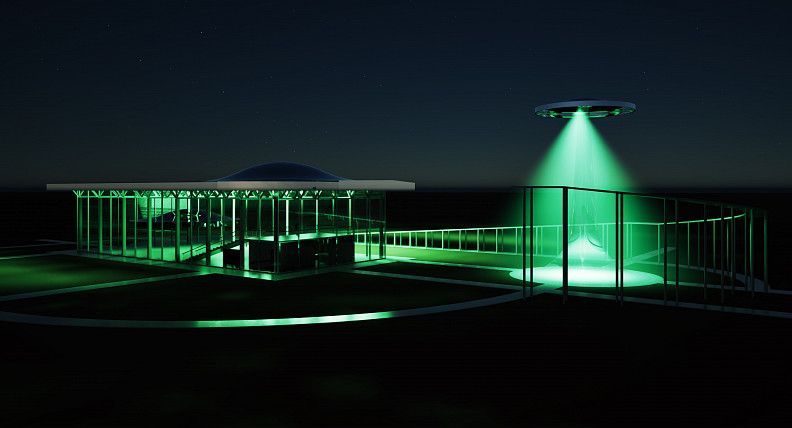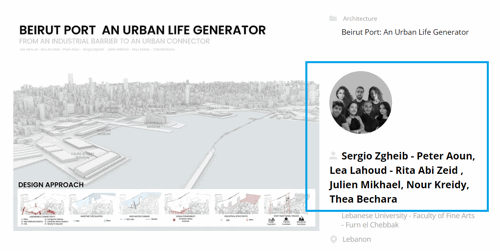UFO - The Exhibition Pavilion

Project idea
An exhibition pavilion is an architectural paradox. It must be a magnet for visitors, yet it cannot overshadow the exhibits within. It must surprise and captivate, yet remain subtle.
The inspiration behind this project is the flying saucer—a symbol of mystery, futurism, and the unknown. Ancient civilizations and their monumental structures continue to baffle us, fueling speculation about extraterrestrial involvement. But what if the aliens never left? What if their ships seamlessly integrated into our architecture?
This pavilion is a landed extraterrestrial fleet. Its hovering forms and dynamic lines create the illusion of UFOs touching down, while a network of pathways and ramps guides visitors into a space where reality meets the fantastic.
Project description
The pavilion is a dialogue between sky and earth, gravity and weightlessness, technology and mystery.
Although it can be divided into exterior and interior zones, this boundary is intentionally blurred, creating a seamless, immersive experience.
• From the outside, the composition consists of three flying saucers, interconnected by ramps, colonnades, and a network of pathways.
• The focal point is the smallest but most striking saucer, perched on a transparent hyperboloid column, as if it is in the midst of landing.
• The main building volume is a glass parallelepiped, with one saucer embedded within it and another hovering above, forming a dynamic roof structure.
• The interior is intentionally minimalist, creating a stark contrast with the expressive exterior while ensuring complete focus on the exhibits.
Technical information
The pavilion’s construction is inspired by industrial architecture—raw, honest, and highly technological.
• Reinforced concrete columns, set into deep structural wells, ensure stability and durability.
• The roof is supported by steel trusses, emphasizing the floating, weightless effect.
• Polished steel cladding reflects the surroundings, turning the building into a shape-shifting entity that blends into any context.
• Floor-to-ceiling glazing, composed of large-format glass panels, dissolves the boundary between interior and exterior.
This pavilion represents the architecture of the future, where industrial aesthetics become art, and technology becomes poetry. Inspired by the revitalization of industrial zones, it goes beyond mere preservation, creating a space where industry turns into myth, and reality merges with the fantastic.














